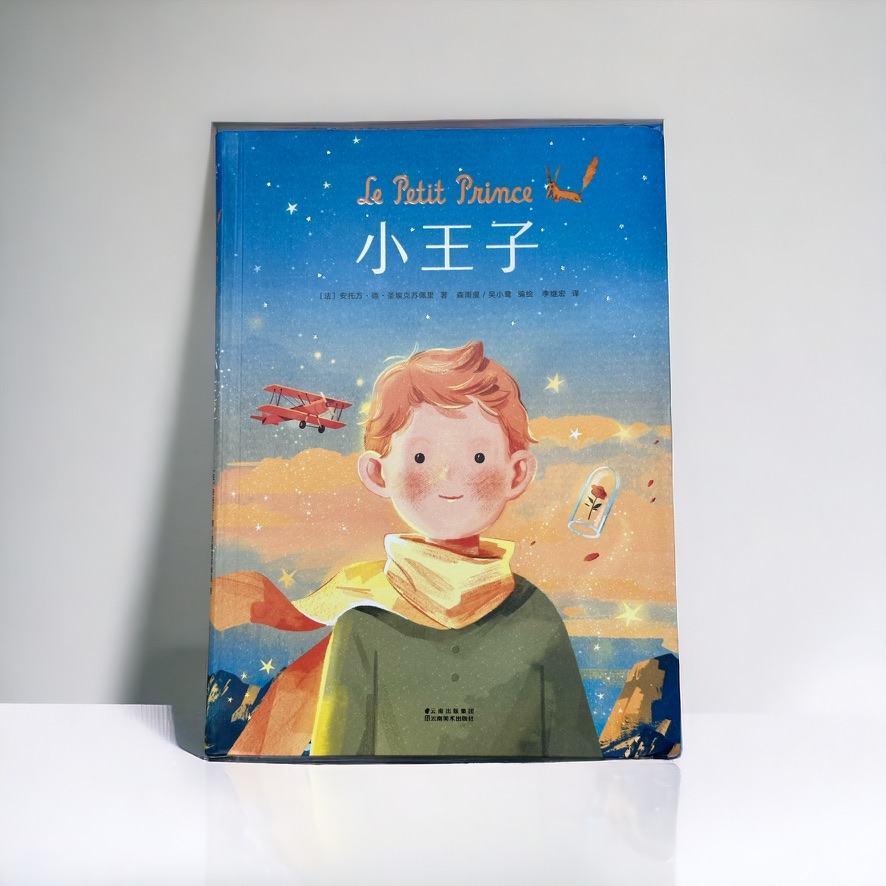
小王子 (Xiǎo Wáng Zǐ) — in Mandarin language.
Mandarin / 官话 / 官話 is a group of related varieties of Chinese spoken across most of northern and southwestern China. The group includes the Beijing dialect, the basis of Standard Mandarin or Standard Chinese. Because Mandarin originated in North China and most Mandarin dialects are found in the north, the group is sometimes referred to as the Northern dialects (北方话). Many local Mandarin varieties are not mutually intelligible. Nevertheless, Mandarin is often placed first in lists of languages by number of native speakers (with nearly a billion).

Mandarin Chinese is known for its use of tones. It has four main tones and a neutral tone, which can change the meaning of a word. The four tones are high-level, rising, falling-rising, and falling.
Written Mandarin uses Chinese characters, which are logograms representing words or morphemes rather than individual sounds. There are thousands of Chinese characters, but around 2,000 are commonly used in everyday writing and communication. Two writing systems exist for Mandarin Chinese. Mainland China uses simplified Chinese characters, which have fewer strokes and are easier to write.
Mandarin Chinese has a subject-verb-object (SVO) word order, similar to English. However, its grammar structure is quite different from Indo-European languages, with no plurals, verb conjugations, or gender distinctions. Its vocabulary consists of a combination of single-character words and multi-character words. Many words are composed of two or more characters to convey specific meanings.


